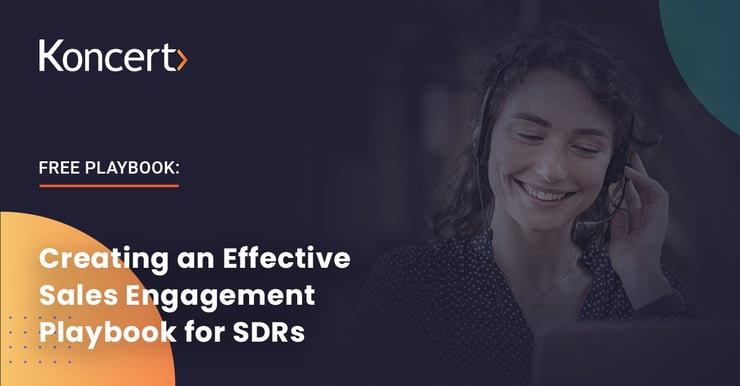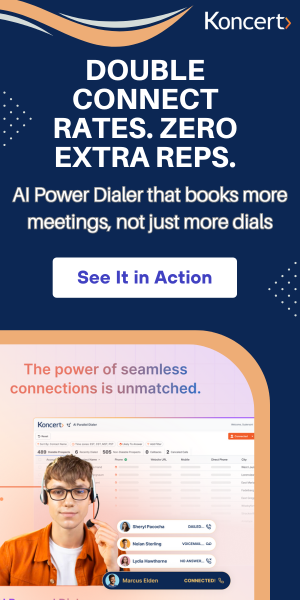13 min read
Email Sequence Guide - What Is It and How Can It Boost Your Revenue?
By: Koncert Marketing on Apr 26, 2022 6:00:00 AM
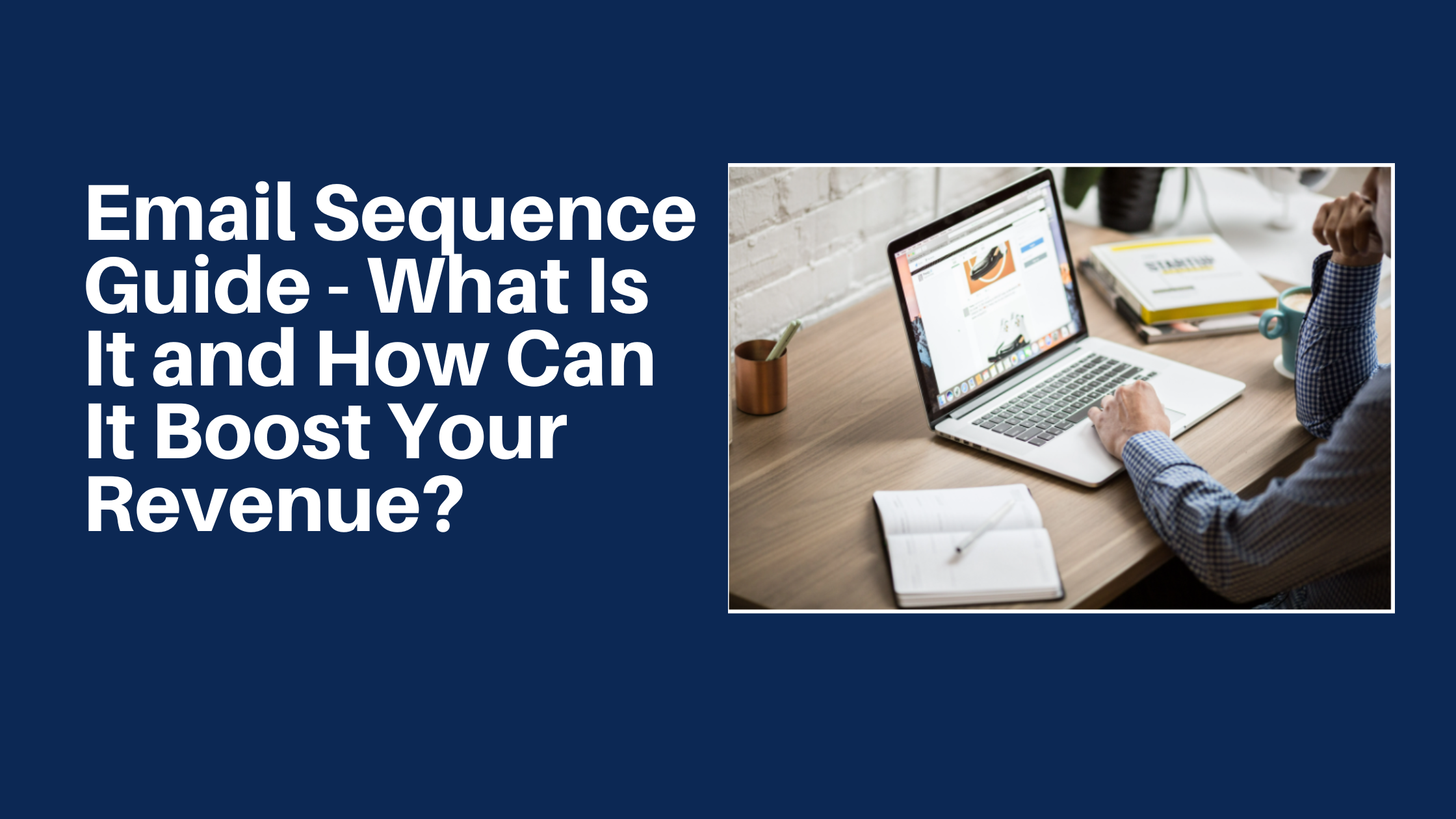
What Is an Email Sequence?
An email sequence is an automated series of emails sent to specific people on your email list.
There are two types of email sequences: trigger-based and time-based.
- Trigger-based email sequences are activated when someone takes a particular action, such as clicking a link in an email or visiting a website.
- Time-based email sequences are sent out automatically after a specific time has passed.
According to HubSpot, marketers record up to 760% in revenue increase with segmented email marketing campaigns, and 78% of marketers experienced a spike in email engagement over the last 12 months.
This article will dive deep into the types of email sequences, including some examples and templates, so you know how to make them work for your business.
Need a sales engagement platform that will integrate seamlessly into your CRM? Koncert's sales integrations feature frees your team up from repetitive tasks and lets you focus on what you do best: selling!
Types of Email Sequences
A few different email sequences can be used to achieve other objectives.
The most common types of email sequences are the following:
- Welcome email sequence
- Onboarding email sequence
- Abandon cart email sequence
- Re-engagement email sequence
- Nurturing email sequence
Welcome Email Sequence
A welcome email sequence is a series of automated emails sent to new subscribers soon after signing up for your email list. These first emails can introduce the subscriber to your company, provide valuable content, and encourage them to take action.
Welcome email sequences are a great way to build relationships with your new customers and increase your conversion rate. Research has shown that welcome emails have a high open rate of 50% — which is 86% higher than a regular newsletter.
It's important to space out your welcome emails so that subscribers don't get overwhelmed. You should send one email per day or every other day. This will give them enough time to read each email and take action.
Welcome Email Sequence Template
Dear {First Name},
Thank you for signing up for our email list! We can't wait to keep in touch.
To make sure you get the most out of our emails, we recommend you complete the following actions:
- Add our email address {Email Address} to your contacts list or safe senders list. This will ensure our emails reach your inbox and not the spam folder.
- Check out our website {Website} to learn more about our company and what we do.
- Like our Facebook page {Facebook Page URL} and follow us on Twitter {Twitter Handle} to stay up-to-date with our latest news and announcements.
Once you've completed these steps, you'll be able to enjoy our content and receive notifications of when new emails are sent.
Thank you again for signing up, and we look forward to keeping in touch!
{Your Name}
Onboarding Email Sequence
An onboarding email sequence — an engagement sequence — is a series of emails sent to a customer shortly after they sign up for your product or service. An onboarding email sequence aims to retain the customer by providing valuable information and helpful instructions.
An effective onboarding email sequence should be personalized to the individual customer and should include a mix of helpful tips and product information. It's essential to ensure that the sequence is relevant to the customer's needs and provides value beyond sales pitches.
If you're looking to create an effective onboarding email sequence for your business, there are a few things to keep in mind:
- Ensure that the sequence is well-organized and easy to follow.
- Focus on providing helpful information rather than just selling the product.
- Make sure that the emails are appropriately timed and spaced out.
- Always test and tweak your sequence to ensure that it's providing the best possible experience for your customers.
An onboarding email sequence can be a great way to increase customer retention and create a strong relationship with your customers. By providing helpful information and valuable tips, you can ensure that your customers have a positive experience with your product or service and that they'll be more likely to stick around long-term.
Onboarding Email Sequence Template
Hello {First Name},
Welcome to our {company name}! We are excited to have you on board.
To get you started, we have put together this {resource} to help you get started. This will give you a little more information about {product} and how you can make the most of it.
Thank you for joining the {brand} family!
{ Signature }
Abandoned Cart Email Sequence
Cart abandonment email sequence is used to try and get sales back in e-commerce. This can be done by reminding the customer about the items they left in their cart or offering them a discount on the items if they purchase them within a certain amount of time.
There are a few different types of abandoned cart email sequences that can be used:
- A reminder email is sent to customers who have left items in their cart. It usually contains a link to the items in the cart and a reminder to the customer about the items they are interested in.
- The cart recovery email is sent to customers who have already completed a purchase but have left items in their cart. It usually contains a coupon or discount code that can be used on the items in the cart. This type of email is designed to get customers to come back and finish their purchases.
- The follow-up sequence is sent to customers who have not responded to the previous emails or have not completed a purchase. It usually contains a more aggressive offer, such as a higher discount or a free item if they complete the purchase.
All of these emails can be customized to fit the needs of your business. It is essential to test different email marketing sequences to find what works best for you. You can also use a tool like Koncert Cadence to help you create and send these emails.
Abandon Cart Email Sequence Template
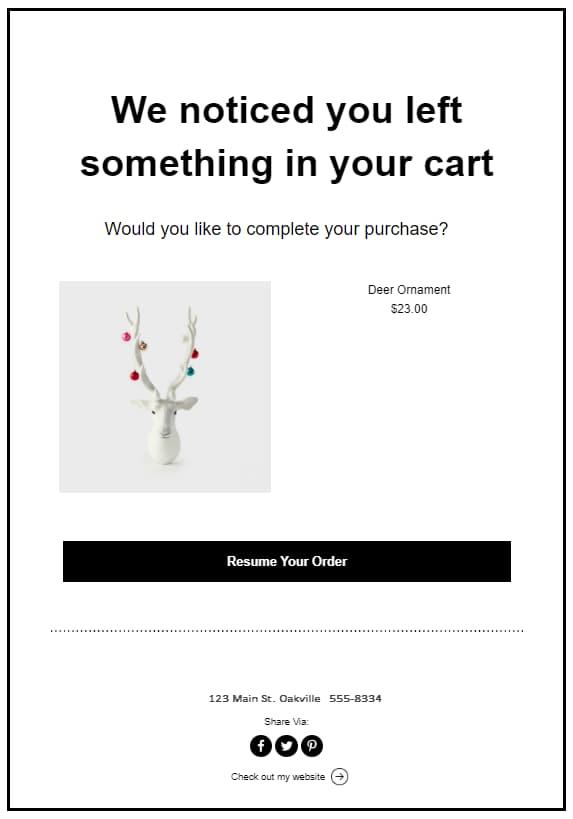
Source: HubSpot
Re-engagement Email Sequence
A re-engagement email sequence is a series of emails you send to customers who have not interacted with your brand. A re-engagement email sequence aims to remind these customers about your brand and encourage them to interact with your brand again.
There are several things you can do to create an effective re-engagement email sequence:
- Find old leads rather than new ones. People who have interacted with your brand in the past are more likely to do so again.
- Know your target audience. Design your emails to appeal to these customers specifically. For example, you can highlight your brand’s latest products or promotions.
- Send your emails at the right time. Many people check their email first thing in the morning, so try to send your re-engagement email sequence early in the day.
Re-engagement Email Sequence Template
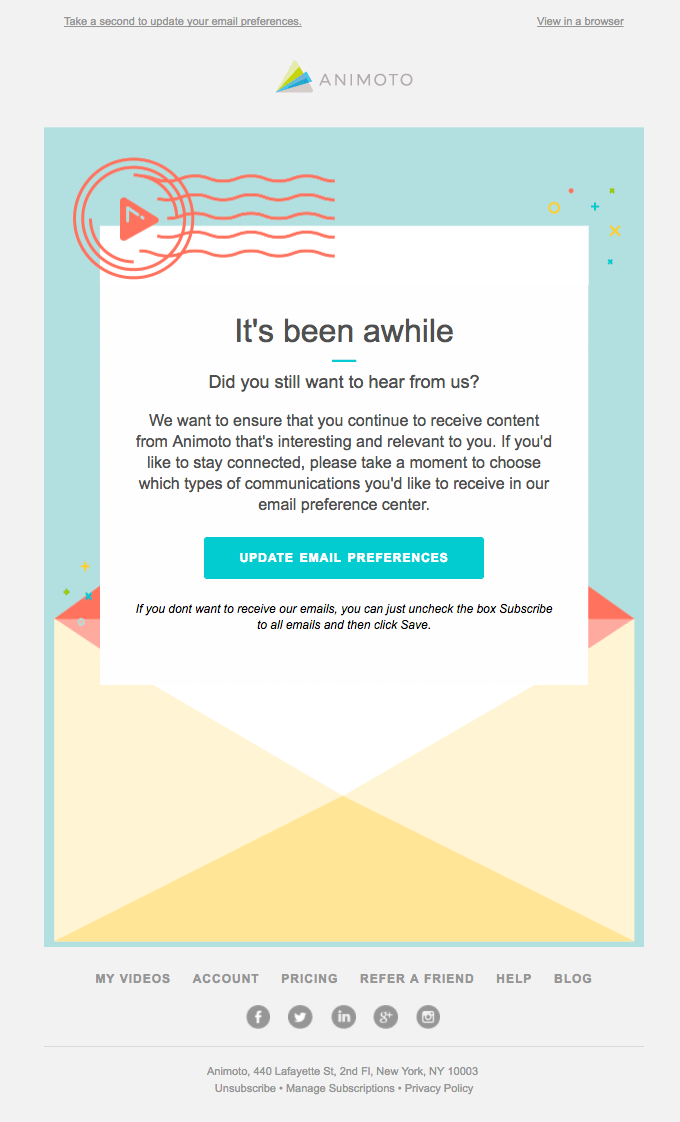
Source: HubSpot
Nurturing Email Sequence
A nurturing email sequence is a series of emails sent to someone to build a relationship with them. Like cold emailing, these emails can be used to introduce a new contact to your company or warm up a potential customer before you make a sales pitch.
To make nurture sequences work for you, ensure that your messages are supported by proof points, either through testimonials or social media content and engagement.
Nurturing Email Sequence Template
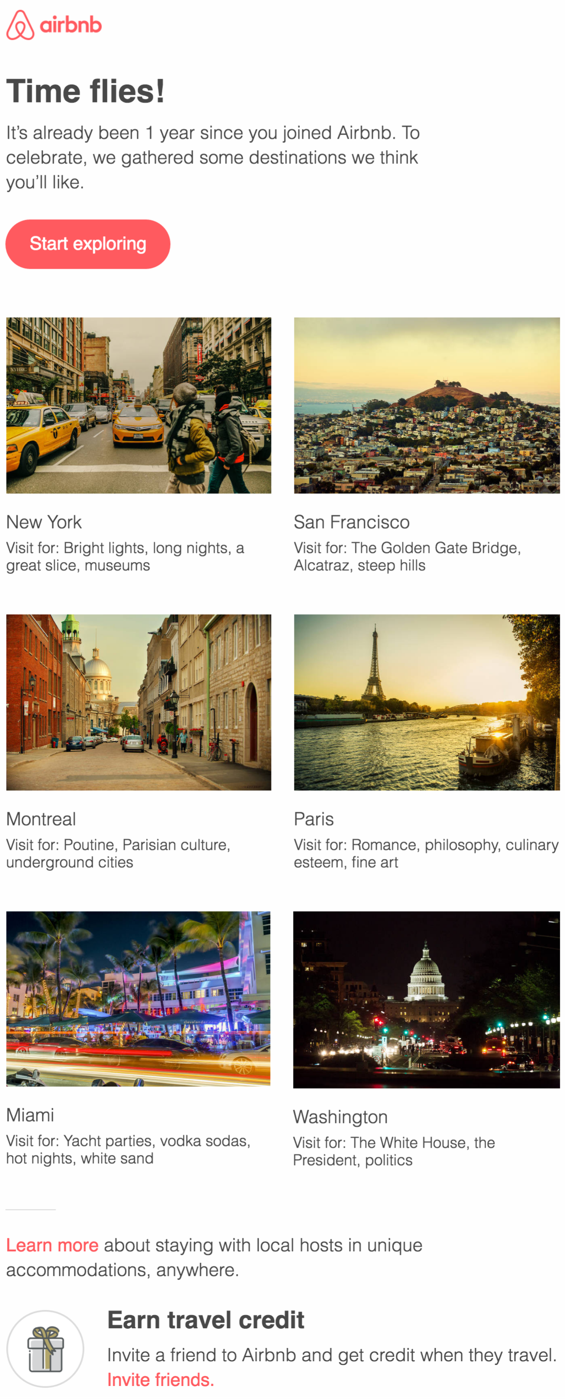
Source: HubSpot
Tips for Creating Better Email Sequences
Regardless of the email sequence you use, you can make them work for you and your email list. Here are some tips for creating better email campaigns:
- Always follow up
- End with a call–to–action
- Stay personable
Always Follow Up
If you want to improve your chances of retaining your customers and getting new ones, it's essential to follow up with your leads via email.
However, simply sending out a series of emails isn’t enough — you also need to make sure that you’re sending the right messages at the right time.
Here are a few tips for creating better drip campaigns and email series:
- Make sure you’re following up quickly. The sooner you follow up, the more likely you will close the deal. Consider having your follow-ups automated, either based on triggers or cadence. Koncert Cadence enables you to send timely follow-ups and keep up with email volume.
- Send relevant content. Don’t send your leads information that isn’t relevant to them.
- Tailor your messages to each lead. Don’t send the same message to everyone. Integrate your automated email sequence with your CRM to set triggers and ensure the messages are relevant to the receiver.
- Use a clear call-to-action. Make it easy for your leads to know what you want them to do.
- Monitor your results and make changes as needed. Continue tweaking your email automation until you get the results you want.
Following up with your leads via email is one of the best ways to close more deals. By sending the right messages at the right time and using a clear call to action, you can improve your chances of success.
End with a Call to Action
Email sequences can be a compelling way to move customers through your sales funnel and closer to a purchase.
However, if they're not effective, they can end up being a waste of time and resources. One of the most significant factors contributing to an email sequence's effectiveness is the call to action (CTA) at the end of the email.
A compelling CTA should be clear, concise, and relevant to the email. It should also be tailored to the specific goals of the sequence.
For example, if the goal of the sequence is to get the customer to buy a product, the CTA should be a link to a landing page where they can purchase the product. If the goal is to get the customer to sign up for a free trial, the CTA should be a link to a sign-up page.
CTAs are an essential part of email sequences — not just in the email body but also in the subject line — because they help you drive the customer towards your desired outcome. When designing your sequence, make sure to put as much thought into the CTAs as you do into the content of the emails.
Stay Personable
It can be tempting to go all-in on the automation when creating an email sequence. After all, that's what makes sequences possible in the first place, right?
But don’t forget the person on the other side of the screen. Sending out a series of cold, impersonal messages or autoresponders is a great way to make your readers unsubscribe and ruin your chances of conversion.
One of the best ways to stay personable in your outreach is through personalized emails — use a tone and language that resonate with your target audience. Keep your messages short and sweet, and make sure that you include plenty of personal touches. This will make people more likely to engage with your content and stick around until the end of the sequence.
Remind your salespeople of the importance of personality when creating sales email sequences. It can make all the difference in terms of engagement and conversion rates.
Trying to figure out the best times for your sales team to be calling their qualified leads? Check out Koncert AI for sales data intelligence that can turn your leads into easy wins.
Streamline Your Sales Engagement with Koncert
Automated email sequences can be an extremely powerful tool for sales engagement, but only when done well.
By understanding the different types of email sequences and using tips like those provided in this article, you can create a system that works better for your business and helps you sell more products or services.
Are you looking to improve your email sequence strategy? Koncert can help create and manage email sequences easily, so you can focus on selling.
Contact us today to learn more about how we can help streamline your email engagement strategy.
Related Posts
10 min read
High-Quality Outreach - Why Koncert's ZigZag Dialing® Replaces Call Blasting
Dec 12, 2025 by Koncert Marketing
13 min read
7 Outbound Sales Trends for 2026 - AI, Latency, & Max Connect
Dec 4, 2025 by Koncert Marketing


